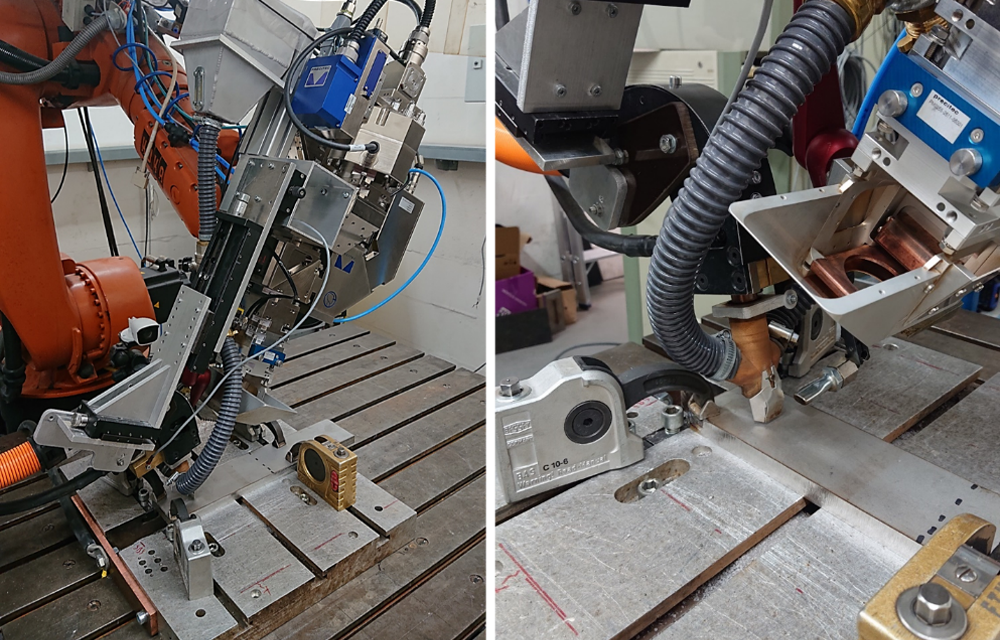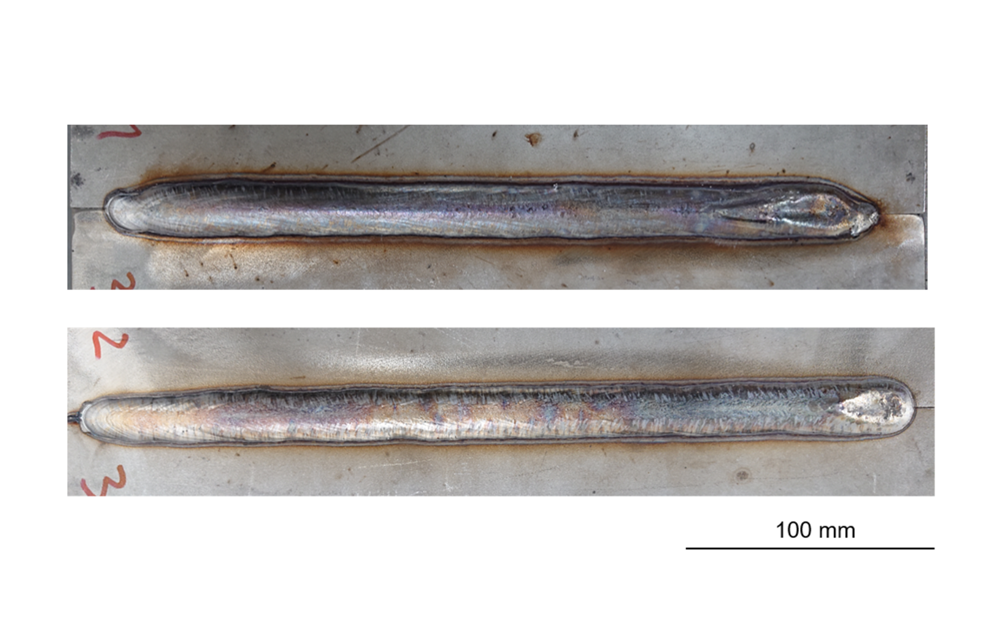Duplex steel: Controlled heat management maintains mechanical properties
Due to their excellent mechanical properties combined with high corrosion resistance, duplex steels are among the high-performance steels that have proven themselves for applications under extreme conditions. They are therefore used in shipbuilding, offshore platforms, and pipelines, as well as for gas, oil, or food containers.
Duplex steels are characterized by a structure ratio of 40% delta ferrite and 60% austenite. International regulations require a minimum austenite content of 30% in welded joints. To achieve this structure, the scientists paid attention to controlled heat input, because this is important for the required cooling time. A too long cooling time can lead to segregations (nitrides and intermetallic phases) as well as to a brittle coarse grain zone. On the other hand, a too low cooling time leads to a low austenite formation. Both would entail a reduction in the weld’s mechanical properties and corrosion resistance.
Laser beam welding as an alternative for industrial welding production
Among the established welding processes are the filler metal-based arc welding processes, such as submerged arc welding and gas shielded metal arc welding. In addition to the heat input, the welded joints are positively influenced by the filler metal. However, productivity is low due to low welding speeds, multilayer welding, and complex seam preparation. In contrast, the beam welding processes have high productivity due to high penetration depths and welding speeds, but cannot meet the requirements of the microstructure proportions to be achieved.
The novel process developed by the researchers as part of the DupLUH project on behalf of the Research Association for Steel Application (FOSTA) combines the advantages of established submerged arc welding with the high productivity of a beam welding process: The results could pave the way for laser beam-submerged arc hybrid welding in the industrial welding production of thick duplex steels.
Excellent joining properties with high productivity
The scientists were able to produce single-layer welds on the 16 mm thick duplex steel 1.4462 at a welding speed of 1 m/min without complex weld preparation. The welds were able to meet the minimum austenite content requirements of 30% and, in addition to excellent strength properties, achieve high notched impact strengths of 120 J at a test temperature of -40 °C. “The results obtained impressively demonstrate the high productivity of laser beam-submerged arc hybrid welding in joining requirements-based welded joints for this challenging class of materials,” says Dr.-Ing. Rabi Lahdo, research associate in the Joining and Cutting of Metals group at the LZH.
For a 20 mm thick duplex steel, two-layer welding processes were developed using the layer-counter layer technique without complex seam preparation. Laser beam-submerged arc hybrid welding with a welding speed of 0.6 m/min was used for the layer. Conventional submerged-arc welding was used for the counter layer. The welded joints exceed the requirements in terms of mechanical properties and corrosion resistance.
Laser beam-submerged arc hybrid welding is also convincing for sheet thicknesses up to 30 mm
Even when joining duplex steel 1.4462 with high plate thicknesses of 30 mm, laser beam-submerged arc hybrid welding was able to convince with its advantages. High-quality welded joints could be produced in the position-counter position technique. As sheet thickness increases, so do the demands on the welding process for producing high-quality welded joints. Nevertheless, the engineers have achieved the requirements for the weld seam. The welded joints have high impact strengths of around 80 J at a test temperature of -40 °C and corrosion resistance in line with requirements.


